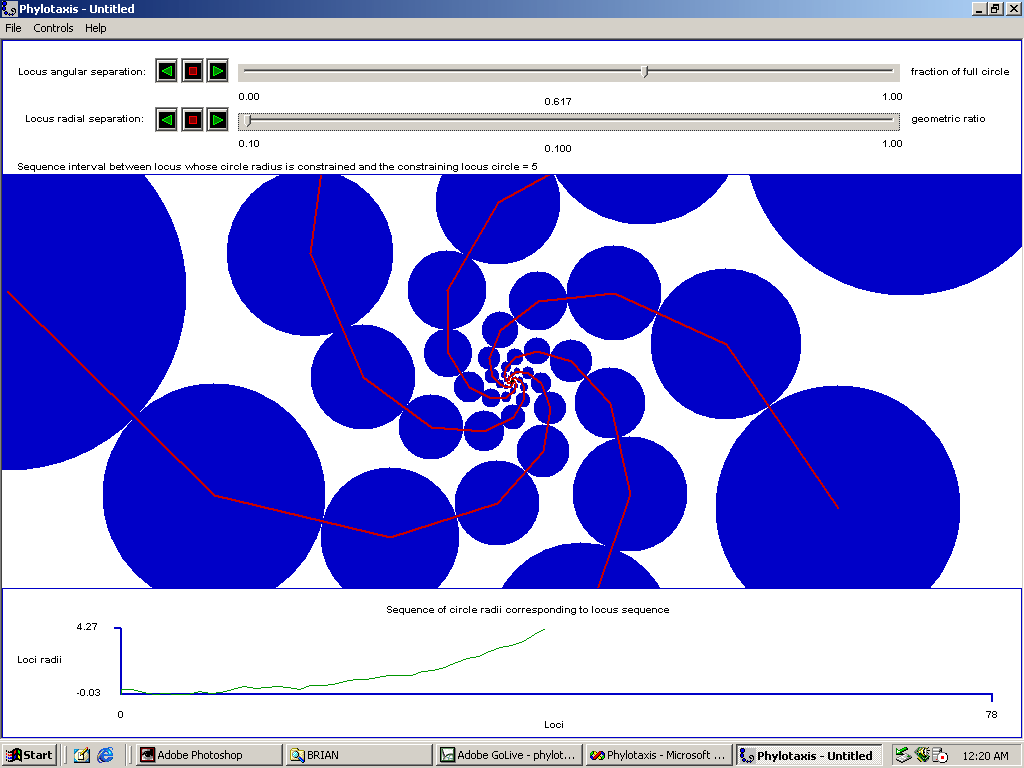Phyllotaxis is the study of the successive arrangement of radial parts of a growing plant, such as the leaves on a stem, or the seeds in the head of a sunflower. Some examples from nature can be seen here.
Essentially, these arrangements can be generated using the following simple procedure. Imagine the first leaf coming off of the stem of some plant. The second leaf that grows from the stem will, first of all, be further outwards or further up the stem, and second of all, it will be coming off of the stem at a different angle than the first leaf. The third leaf then does the same as the second. It grows further outwards or further up the stem than the second did, and the angle at which it grows has increased again by the same amount it did between the first and the second leaves. That is the procedure for generating a phyllotaxic arrangement of leaves, or other things.
This application generates a simple phyllotaxic arrangement of circles, expanding outward at either a linear or an exponential rate. You can specify the angle between each circle (between 0 and 360 degrees), and you can determine rate of expansion using a pair of slider controls. Animated transitions between phyllotaxis arrangements which differ in their angle, or their exponential rate, or both, can be created using another corresponding pair of buttons to the left of the slider controls for angle and expansion rate. Furthermore, you can print an image of any phyllotaxis arrangement of any size. And graphs can be displayed showing the radius of each of the successive circles in the phyllotaxic arrangement, or showing the density of space (measured as the fraction of space which is contained in the interior of the circles; that is, the fraction of space which is occupied by the area of the circles) as the radius of the density sample increases.
See the help file for a more complete description.
Screenshot:

Copyright © 2023 Atomic Concepts Software